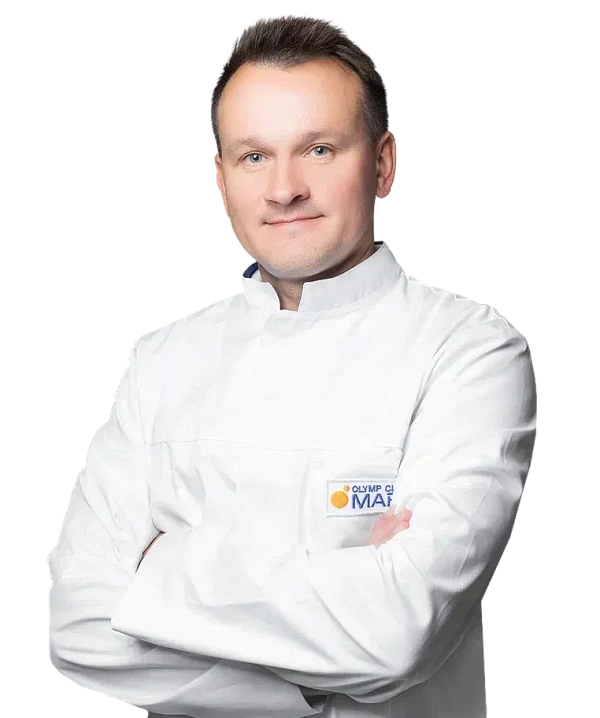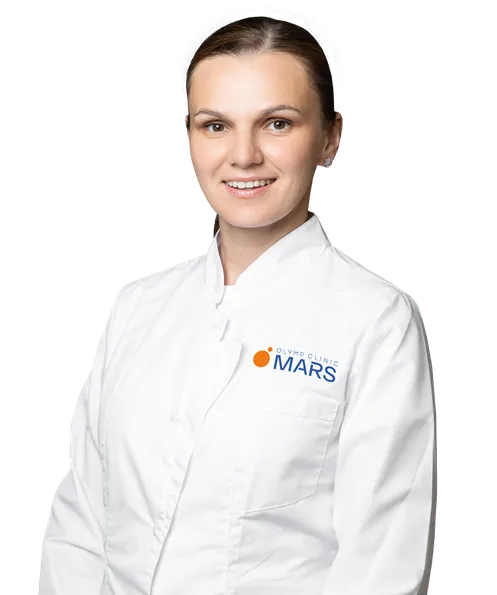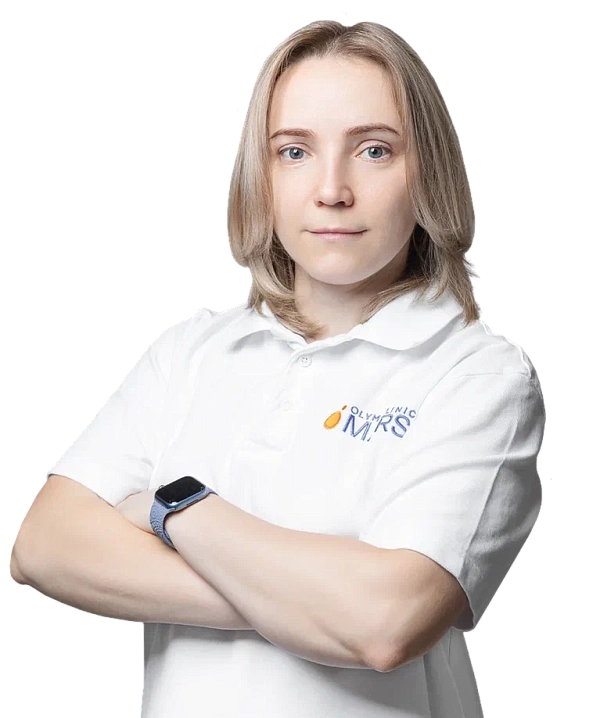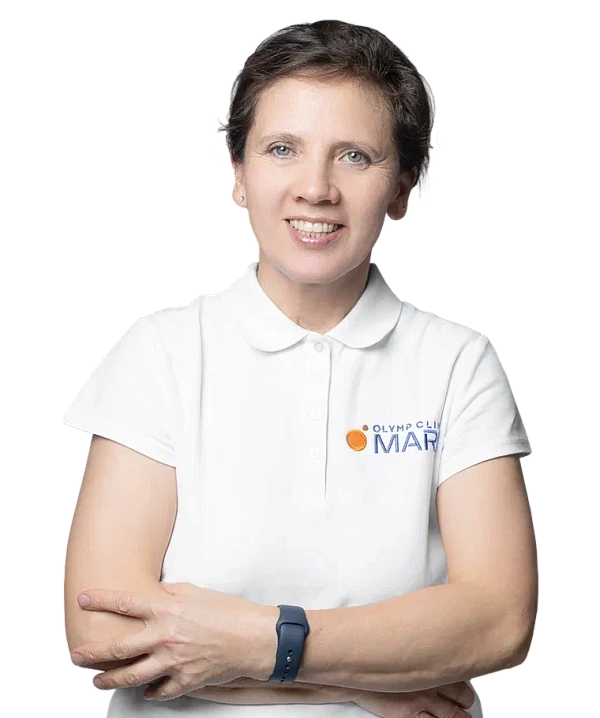Myofascial release
Manual technique aimed at eliminating muscle and fascial strains, improving joint mobility and reducing pain.
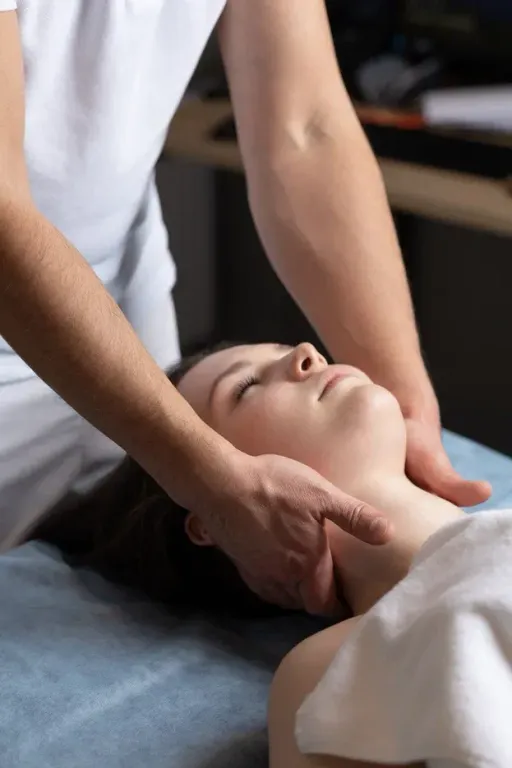
Myofascial release (MFR) is based on working with muscles and fascia — connective tissues covering muscles and organs. When exposed to trigger points (areas of increased tension) and fascial shortening, MFR eliminates spasms, restores normal blood flow and lymph flow.
The modern rhythm of life, sedentary work, lack of movement and stress often lead to impaired fascial gliding. This can cause pain and restrict mobility. Myofascial release relieves symptoms and eliminates the root cause of the problem, improving the connection between muscles and the central nervous system. MFR is useful for muscle imbalance caused by improper posture or prolonged exertion, as well as for recovery after training. It helps to eliminate hypertension, increase tissue elasticity and reduce the risk of injury.
Before the myofascial release session, the patient is recommended: Consult with your therapist or your doctor about the presence of contraindications. Avoid heavy meals 1-2 hours before the procedure.
The session begins with an assessment of the condition of the muscles and fascia. The specialist determines trigger points and areas of fascial tension using palpation. Depending on the patient's condition, methodical stretching, pressure or soft rotational movements are used. Massage rolls or balls can be used during the procedure, which enhance the mechanical effect. The technique of performing MFR also includes working with the patient's breathing: proper deep breathing helps to relieve tension and improve tissue interaction. The duration of one session is 30-60 minutes.
Massage rolls for a deep effect on the fascia. Massage balls for local study of trigger points. Vibration devices and other hardware.
After the MFR session, it is recommended to drink more water to improve metabolic processes and eliminate decomposition products. The patient may feel relieved after the first session, however, a course of 6-10 procedures is recommended to achieve a lasting effect. During the recovery period, it is advisable to continue to maintain body mobility: practice light exercises, avoid sudden loads and follow the recommendations of a specialist.
Elimination of muscle spasms Effectively relieves tension and restores mobility. Increased flexibility and improved posture Strengthens the muscular corset and improves coordination. Fast recovery after exertion Helps athletes get back to training faster. Complex impact Improves the general condition of the body, including the work of the lymphatic and nervous systems.
Frequently Asked Questions
How do I understand that I need a myofascial release?
Is the procedure suitable for the elderly?
Is it possible to perform a myofascial release on your own?
How many sessions are required to achieve a result?
Didn't find an answer to your question?
You can describe your problem in detail and ask a question to the doctor. He will answer you and help you find a solution
Specialists
Find a SpecialistCandidate of Medical Sciences. Orthopedic Trauma Physician, Chiropractor, Sports Medicine Physician, Physical Therapist. Head of the Rehabilitation and Restorative Medicine Department.
Physical therapy instructor
Doctor of physical therapy and sports medicine, orthopedic traumatologist
Rehabilitation Therapist
Useful information
Cervicogenic headache (CGB)
Secondary headache caused by pathologies of the cervical spine, surrounding soft tissues or nervous structures. The pain starts in the neck and can spread to the back of the head, forehead, and temples.
Myofascial Pain syndrome (MFBS)
A pathological condition characterized by pain in the muscles and their spasm due to the formation of trigger points - areas of increased sensitivity and tension in the muscle tissue.
Medial epicondylitis
A condition associated with overexertion of the flexor muscles of the hand and pronators of the forearm, which attach to the medial epicondyle of the humerus. It is one of the common causes of pain in the inner part of the elbow joint.
Lateral epicondylitis
Inflammation of tendons of the forearm muscles attached to the epicondyle of the humerus.
Similar referral activities
Consultation with a rehabilitologist
The doctor of the department of rehabilitation and restorative treatment is engaged in restoring or compensating for the lost functions of the patient after various injuries, operations and diseases.
High-intensity magnetic therapy (SIS)
The method of physiotherapy, which is based on the effect of a powerful pulsed magnetic field on body tissues, which contributes to pain relief, reduces inflammation and accelerates tissue regeneration.
Techar therapy
A method of physiotherapy based on the use of electromagnetic waves of a certain frequency for a deep impact on the tissues of the body.
Shock Wave therapy (UHT)
A treatment method based on the effect of acoustic shock waves on body tissues.
Low-frequency electrostatic therapy
A method of physiotherapy based on the effect of a low-frequency electrostatic field on body tissues.
Mechanotherapy
A rehabilitation method based on the use of mechanical devices to restore joint mobility and increase muscle strength in patients after injuries and operations on the musculoskeletal system.
How to reach
How to get
From the Belorusskaya metro station of the Zamoskvoretskaya line - exit 4 After exiting the subway, walk through the pedestrian tunnel and climb the stairs. Move towards the railway tracks, go down the stairs immediately after them and walk along the house, then turn right onto 1st Yamskoye Pole Street. At the turn to 3rd Yamsky Pole Street, cross the road at the pedestrian crossing and continue along 1st Yamsky Field Street, after a few buildings on the left you will see Olympus Clinic MARS.
Travel time
9 minutes
Landmark
Olympus Clinic MARS sign
How to get
From the Belorusskaya metro station of the Ring line - exit 2. After exiting the subway, turn left and walk to the pedestrian crossing. Cross the road through two pedestrian crossings and move along the Tverskoy overpass. Go down the stairs immediately after the railway tracks, walk along the house, then turn right onto 1st Yamskoye Pole Street. At the turn to 3rd Yamsky Pole Street, cross the road at the pedestrian crossing and continue along 1st Yamsky Field Street, after a few buildings on the left you will see Olympus Clinic MARS
Travel time
11 minutes
Landmark
Olympus Clinic MARS sign
From the metro station "Tsvetnoy Bulvar"
1 exit to the city, then left to the Garden Ring, at the crossing to the right, crossing the boulevard, one more crossing and at the traffic light to the left. The Olymp Clinic building is located overlooking the Garden Ring to the right of the crossing. Travel time is approximately 9 minutes. Landmark - sign Olymp Clini
From the metro station "Sukharevskaya"
Exit 3 from the metro and 640 meters straight ahead, the clinic will be on the right. Landmark - sign Olymp Clinic
Parking lot map
Exit 3 from the metro and 640 meters straight ahead, the clinic will be on the right. Landmark - sign Olymp Clinic
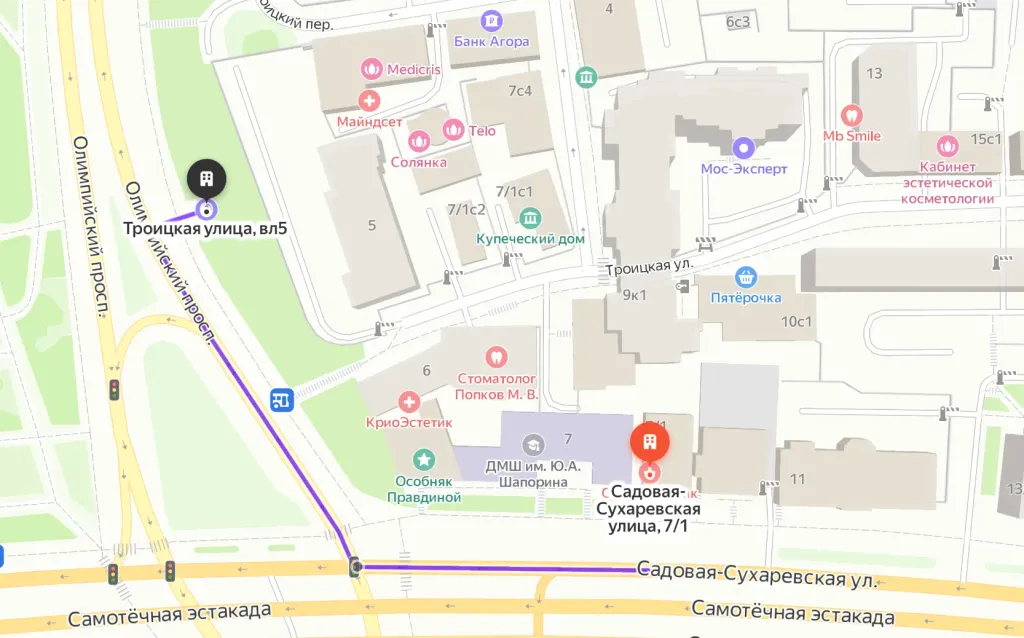
From Sokol metro station
The last car from the center: follow the signs for Exit 5. From the glass doors to the right and go to the end of the passage. Exit to the city by the steps to the left. After exiting the crossing to the street, go straight along Leningradsky Prospekt to the intersection with Chapaevsky Lane. Next, turn right (onto Chapaevsky Lane) and walk to the Triumph Palace residential complex. Entrance to the territory: through checkpoint No. 1, opposite the Vkusville store, you will need to present your passport. After passing through the checkpoint, go up the stairs to the fountain, opposite it you will see our clinic.
Travel time
10-12 minutes
From the Airport metro station
The first car from the center: follow the Exit 2-3 signs. Turn left out of the glass doors and walk to the end of the passage. After exiting the crossing to the street, go straight along Leningradsky Prospekt to the intersection with Chapaevsky Lane. Next, turn left (onto Chapaevsky Lane) and walk to the Triumph Palace residential complex. Entrance to the territory: through checkpoint No. 1, opposite the Vkusville store, you will need to present your passport. After passing through the checkpoint, go up the stairs to the fountain, opposite it you will see our clinic.
Travel time
12-15 minutes
How to get
Entry to the territory is prohibited, but there are free city parking lots around the Triumph Palace residential complex, where you can easily find a place for your car. Free parking area:

